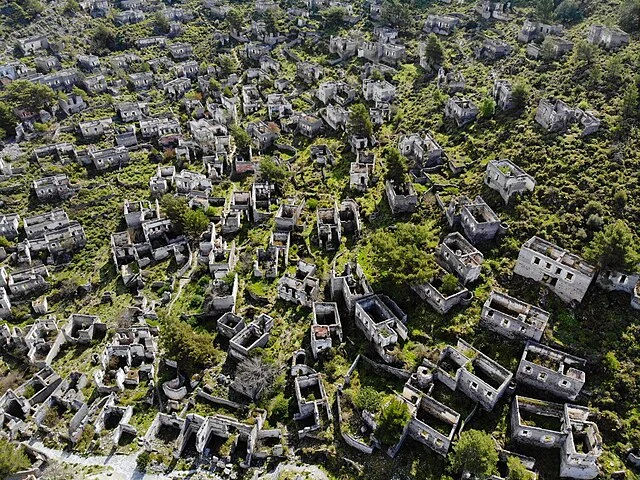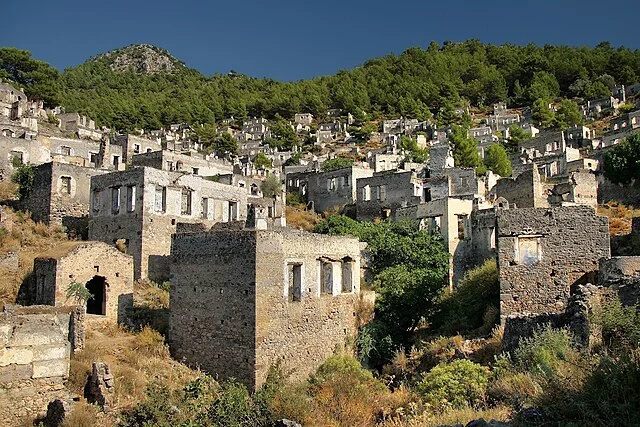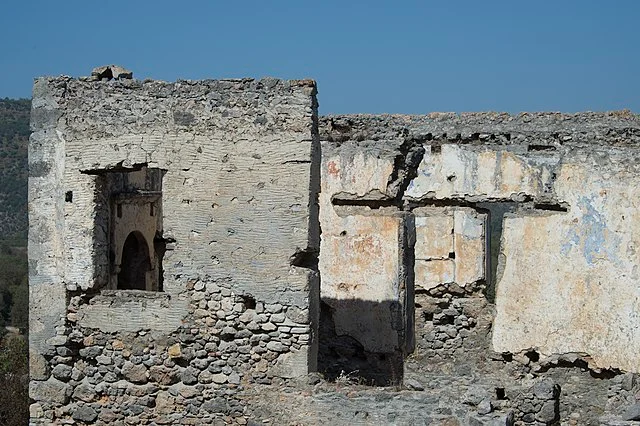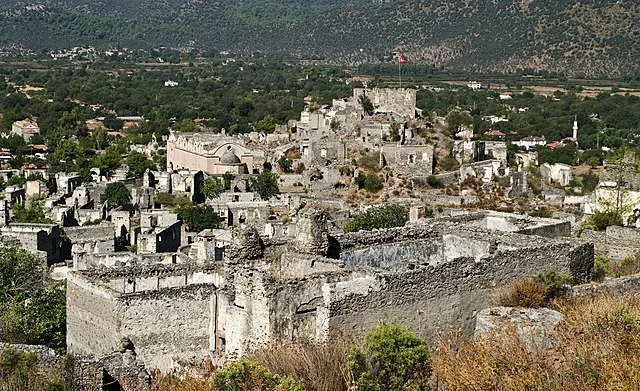Kayaköy, located in southwestern Turkey, is a historical ghost town that offers significant insight into the region’s past. It lies near Fethiye, in the Muğla Province. The town was once inhabited by Greek Orthodox Christians, making it an important cultural and historical site. The history of Kayaköy is marked by its role in the population exchange between Greece and Turkey in the early 20th century.
Get your dose of History via Email
Early History of Kayaköy

The origins of Kayaköy date back to antiquity, with evidence of ancient settlements in the area. During the Byzantine period (4th–15th centuries AD), Kayaköy grew into a thriving community. It was known as Levissi in the late medieval and Ottoman periods. By the 18th century, the town had become a center for Greek Orthodox Christians.
The town consisted of stone houses, churches, and schools. Its population lived in relative peace, maintaining a unique culture influenced by both Greek and Ottoman traditions. The architectural layout of the town was designed for practicality, with houses carved into the hillside. The steep location provided natural defense, and the stone houses, built in the traditional style, were durable and suited to the terrain.
The Population Exchange

The most significant turning point in Kayaköy’s history occurred in 1923, with the Treaty of Lausanne and the subsequent Greek–Turkish population exchange. This exchange resulted in the forced relocation of the Greek Orthodox Christians of Kayaköy to Greece. In exchange, Muslims from Greece were resettled in the town.
As a result, the town was abandoned by its Greek inhabitants. The newly arrived Turkish settlers did not remain long, and the town was gradually left to decay. Over time, the buildings fell into ruin, and the once-bustling town became a ghost town.
Architectural Features

Kayaköy is known for its well-preserved stone houses, churches, and other buildings. The town features more than 350 houses, a number of churches, and a mosque. Most of these structures have remained largely untouched since the abandonment. The buildings were made from local stone, which gave the town a rugged, yet picturesque, appearance.
The town’s two main churches, the Church of the Panagia and the Church of St. Nicholas, are notable for their size and design. They stand as testament to the once-thriving Greek Orthodox community. The structures, though dilapidated, still convey the town’s once prosperous religious and cultural life.
Present-Day Kayaköy

Today, Kayaköy is a popular tourist destination, attracting visitors interested in its history and unique ruins. The Turkish government has recognized the site’s historical importance, and efforts have been made to preserve the town. While the buildings are in various states of disrepair, the site still maintains its eerie and haunting atmosphere.
The town has also become a symbol of the deep cultural and historical connections between Greece and Turkey. Despite the tragic events of the population exchange, Kayaköy stands as a reminder of the region’s complex past.
Conclusion
Kayaköy’s significance lies in its unique history and architecture. The town offers valuable insight into the Greek Orthodox community of the region before the population exchange of 1923. Its abandoned state serves as a poignant reminder of the impact of historical events on communities and their cultures. Today, it remains an important site for those interested in the history of the region and the broader implications of the Greek-Turkish population exchange.
Source:

